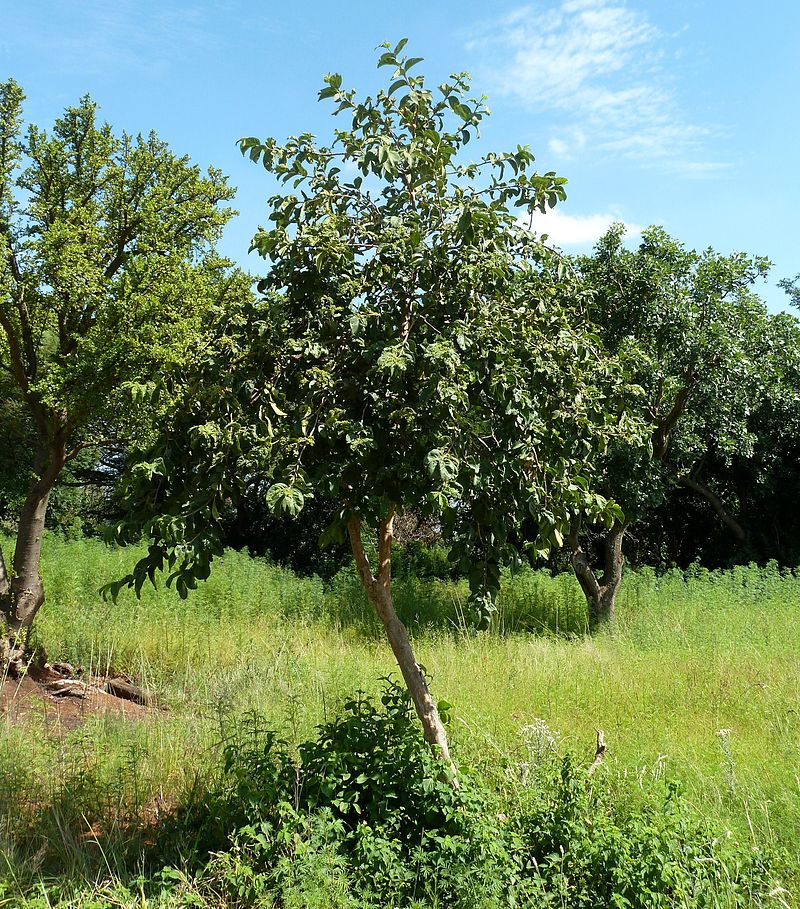One of the trees which grow where others give up, is the African Medlar. Growing in dry, eroded, infertile sites in eastern, central and southern Africa, their fruits provide a food source for humans and animals alike, whereas leaves and roots are used for medicine and fodder. Though they are traditionally grown in wild areas, they have proven to do very well in domesticated back yards as well. You can grow them either from their seeds or cuttings. As they will not take that much place, developing into a scrub or small tree, they should fit many places, be they fallow plots or well nursed kitchen gardens.

Habit of a Wild medlar near Pretoria, South Africa, source: Wikipedia
magical & medical powers of the Mfulukutu
It is said that according to the Chewa, the Mfulukutu – Vanguaeria infausta – can be used to treat eye complaints, whilst others claim the leaves are useful against toothache & swellings and its roots can relief chest and menstrual complaints.
Yet according to others it possess evil powers. Therefor, you should not use its wood for making fire, nor should you let cattle near it, as it would cause your animals to bear only male offspring. Proven or not, curses as such may actually help the African Medlar to continue to bear fruits in harsh dry conditions, where many other scrubs and trees may easily have withered away. Would its wood be burned or eaten, the plains might be left empty, for the wind to take the soil.
backyard food store
Unlike many other fruits, the fruits of this wild Medlar do not fall off once ripe, but can stay on the tree, remaining edible for about six months – making it a handy backyard food store for times when other food resources are scarce. In addition, it is relatively easy to dry the fruits and store them for much longer.
As the ratio of fruit to seed size varies significantly by the amount of water and care it receives, and the fruits have to be handpicked, backyard seems to be good places to keep them anyway. Compared to African Meldars found in the wild, Maghembe found, cultivated species produced about 10x larger fruits, making it a good tree to keep near the house.
